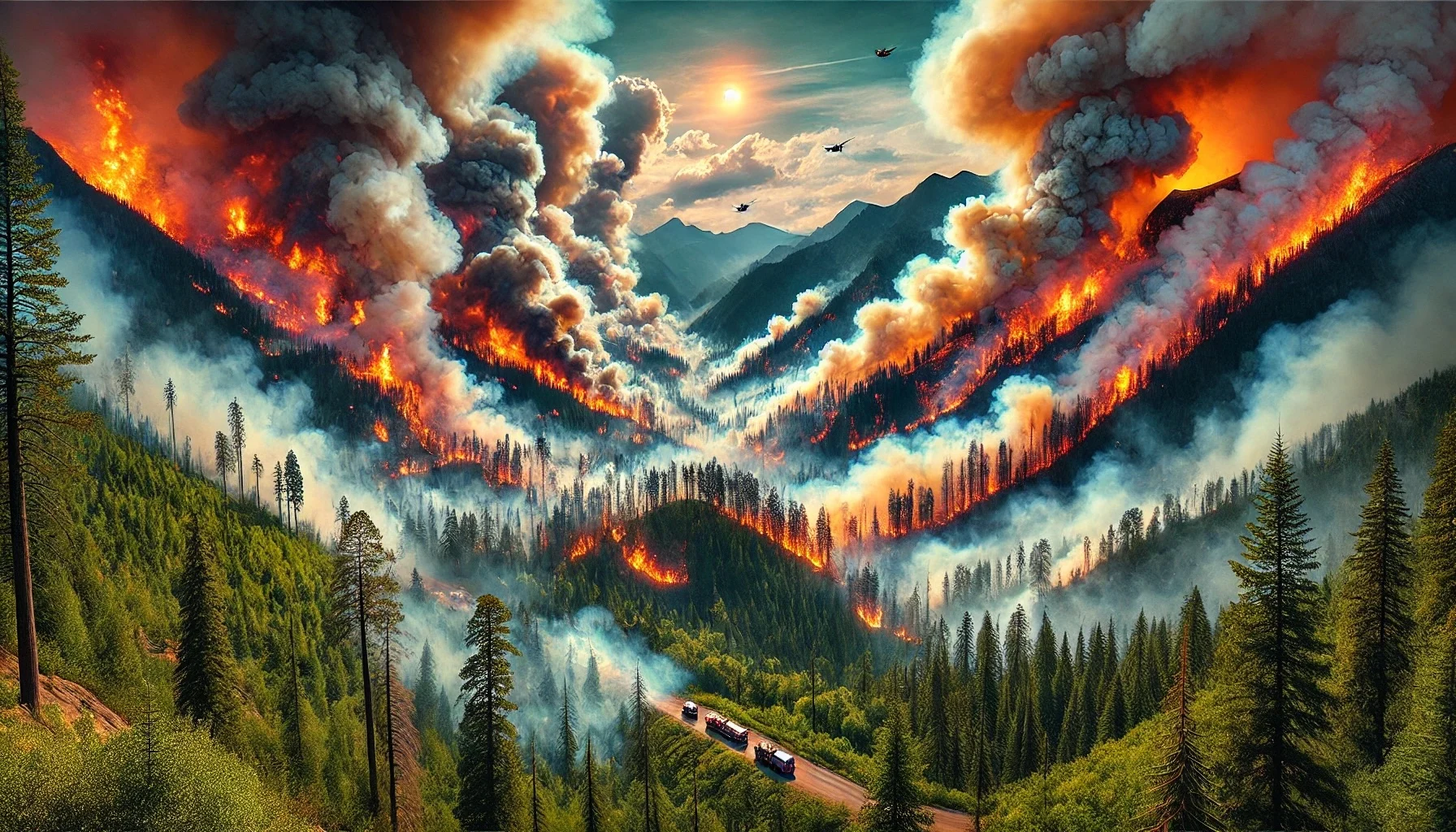
The 2021 Tiger Fire
by: The Calamity Calendar Team
June 30, 2021
The Spark in the Mountains
June 30, 2021, started like any other scorching summer day in the Bradshaw Mountains, but by midday, the landscape’s tranquility was shattered. A wildfire, later named the Tiger Fire, erupted near Crown King, Arizona. The Bradshaw Mountains, known for their dense forests and rugged terrain, were a tinderbox waiting for a spark during Arizona’s peak fire season, characterized by dry conditions and relentless heat.
The Rapid Spread
The fire spread with alarming speed, fueled by dry underbrush and strong winds. By early July, it posed a significant threat to homes and infrastructure. Firefighters from various agencies sprang into action, deploying ground crews, helicopters, and air tankers to combat the blaze. Despite their efforts, the fire continued its aggressive march, reaching approximately 11,000 acres by July 6.
Community in Crisis
As the fire raged on, evacuation orders were issued to protect residents. Roads were closed, and shelters were set up for those displaced by the advancing flames. The local community, heavily reliant on tourism, faced significant disruption. Businesses shuttered, and the usually bustling summer season ground to a halt as smoke filled the air and ash rained down.
Thanks for subscribing!
The Battle to Contain
Firefighters worked tirelessly throughout mid-July, their efforts intensified as they sought to contain the fire and protect critical infrastructure. By late July, their hard work began to pay off. The fire’s growth slowed significantly, and containment lines started to hold. However, the fight was far from over, as crews continued to monitor and address hotspots to prevent flare-ups.
A Land Scarred, But Unbowed
By the end of July, the Tiger Fire was largely contained. It had burned over 16,000 acres, leaving a charred landscape in its wake. Miraculously, there were no reported fatalities or significant injuries, a testament to the effectiveness of the evacuation and firefighting efforts. While some structures were damaged, the financial cost of the fire remained undetermined, overshadowed by the community’s relief at the absence of human loss.
The Long Road to Recovery
In the aftermath, the focus shifted to recovery and prevention. Efforts were made to stabilize the soil to prevent erosion and encourage vegetation regrowth. Continuous monitoring of the affected area ensured that the ecological recovery was on track. The local community began the slow process of rebuilding, buoyed by the resilience they had shown in the face of adversity.
Lessons Learned and Future Preparedness
The Tiger Fire left an indelible mark on Crown King and the surrounding areas. In its wake, authorities reviewed and improved wildfire preparedness and response strategies. Research into the fire’s behavior provided valuable insights, informing future firefighting tactics and community safety measures. The event underscored the importance of readiness and the need for ongoing education and infrastructure improvements to better handle future wildfires.
Ongoing Vigilance
As of 2024, the recovery from the Tiger Fire continues. The community remains vigilant, with enhanced monitoring and readiness measures in place. The scars of the fire serve as a stark reminder of nature’s power and the importance of preparedness. The lessons learned from the Tiger Fire will help shape a safer and more resilient future for the Bradshaw Mountains and beyond.
The Tiger Fire was a formidable challenge, but through coordinated efforts and community resilience, Crown King emerged stronger. The event highlighted the critical importance of preparedness and the power of a united response in the face of natural disasters.
Stay in the Loop!
Become a Calamity Insider and get exclusive Calamity Calendar updates delivered straight to your inbox.
Thanks! You're now subscribed.